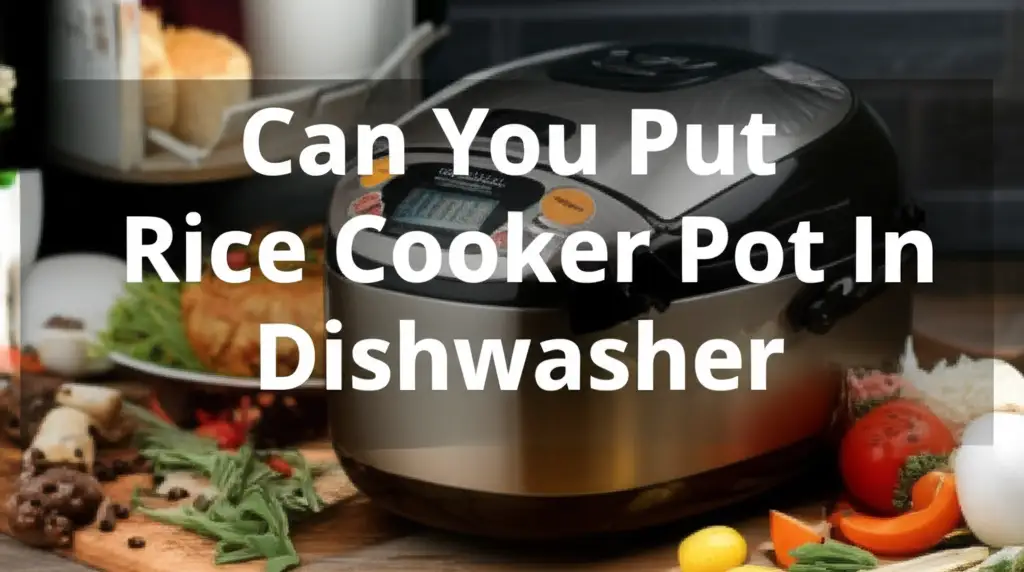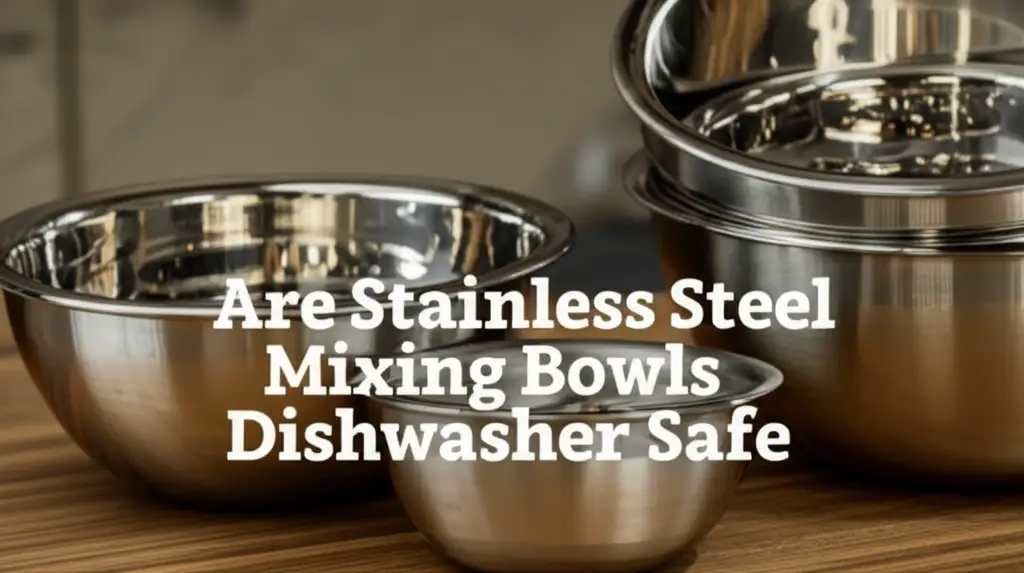· Liora Benning · Kitchen Care · 10 min read
Can You Put Rice Cooker Pot In Dishwasher

Is Your Rice Cooker Pot Dishwasher Safe? The Ultimate Guide
I love using my rice cooker. It makes perfect rice every time. Cleaning it, though, can sometimes feel like a chore. The inner pot is the part that gets the most use. This often leads to a common question: Can you put rice cooker pot in dishwasher? This article helps you find the answer for your specific pot. We will explore different materials, potential risks, and the best ways to clean your rice cooker pot. You will learn how to keep your appliance working well for many years.
Takeaway:
- Always check your rice cooker’s instruction manual first.
- Non-stick pots usually require hand washing to protect their coating.
- Stainless steel pots are often dishwasher safe but check for specific warnings.
- Hand washing is generally the safest method for all rice cooker pots.
- Proper care extends the life of your appliance.
Whether you can put a rice cooker pot in the dishwasher depends on its material and the manufacturer’s specific instructions. Many non-stick rice cooker pots are not dishwasher safe, as machine washing can damage their delicate coating. Stainless steel or ceramic pots might be, but always check the user manual to confirm compatibility and avoid damage.
Understanding Rice Cooker Pot Materials and Dishwasher Compatibility
The material of your rice cooker pot determines how you should clean it. Different materials react differently to harsh detergents and high heat in a dishwasher. Knowing your pot’s material helps you make the right cleaning choice. This knowledge prevents damage and keeps your pot in good condition.
Non-Stick Coated Pots: The Delicate Balance
Most rice cooker pots have a non-stick coating. This coating prevents rice from sticking. It makes cooking and serving much easier. However, this coating is delicate. Dishwashers use strong detergents and very hot water. These elements can strip away the non-stick layer. The coating can chip, peel, or become less effective. Always hand wash non-stick pots to protect their surface. I find a soft sponge and warm soapy water work best.
Stainless Steel Rice Cooker Pots: Durability Meets Convenience
Some premium rice cookers feature stainless steel inner pots. Stainless steel is a durable material. It resists corrosion and scratches better than non-stick coatings. Many stainless steel pots are dishwasher safe. They can handle the heat and detergents. Still, check the manufacturer’s manual. Some stainless steel pots may have specific care instructions. They might recommend hand washing to maintain their shine.
Aluminum Rice Cooker Pots: A Cautionary Tale
Aluminum is a common material for cookware. It heats up quickly and evenly. However, raw aluminum can react badly in a dishwasher. The harsh detergents can cause discoloration. It can also pit or corrode the surface. This damage can make the pot look bad. It might also affect its cooking performance. If your pot is aluminum, hand washing is almost always necessary. Anodized aluminum is more resistant but still requires checking the manual.
Ceramic and Clay Pots: Traditional Care Needs
Traditional or specialized rice cookers may use ceramic or clay pots. These materials offer unique cooking properties. They often distribute heat very well. Ceramic and clay pots are generally fragile. They can crack or chip in a dishwasher. The high heat and vibrations are not good for them. Hand washing with mild soap is essential for these types of pots. Treat them with extra care.
Why Manufacturer Instructions Matter for Your Rice Cooker Pot
The manufacturer knows their product best. They provide specific cleaning instructions for a reason. These instructions tell you if your rice cooker pot is dishwasher safe. Failing to follow them can cause damage. It can also void your appliance’s warranty. Always check the user manual before cleaning.
The manual provides crucial information. It details the pot’s material composition. It also lists recommended cleaning methods. Some manuals might state “dishwasher safe” clearly. Others will specifically warn against it. Ignoring these warnings can lead to expensive repairs. It also shortens the life of your rice cooker. I always keep my appliance manuals handy for quick reference.
Manufacturers design rice cooker pots for specific uses and cleaning methods. They test their products for durability. Their instructions reflect these tests. For example, a non-stick coating applied at the factory is meant for a certain type of cleaning. Machine washing can compromise that. You want to make sure you use the right amount of detergent for your dishwasher too. If you are unsure about how much dishwasher powder to use, check this guide: How Much Dishwasher Powder To Use. This ensures you clean effectively without causing damage.
The Risks of Putting a Non-Dishwasher Safe Rice Cooker Pot in the Dishwasher
Putting a non-dishwasher safe rice cooker pot in the dishwasher carries several risks. These risks range from cosmetic damage to safety concerns. Understanding these dangers helps you make informed cleaning choices. It protects your appliance and your health.
One major risk is damage to the non-stick coating. As mentioned, this coating can peel, blister, or wear away. Once damaged, food will stick more often. This makes cooking and cleaning much harder. It defeats the purpose of having a non-stick pot. The pot’s performance declines rapidly.
Discoloration or corrosion is another common problem. Aluminum pots can turn dull or black. Stainless steel might develop stains or rust spots. These changes affect the pot’s appearance. They also indicate material degradation. This degradation can lead to a shorter pot lifespan.
Warping is also a risk. High heat in a dishwasher can deform some materials, especially thinner ones. A warped pot will not fit properly in the rice cooker. It can also cook rice unevenly. This makes your rice cooker less effective. In extreme cases, a severely warped pot might not work at all.
Furthermore, damaged coatings can release harmful chemicals. Small flakes of non-stick material can mix with your food. While generally considered safe in tiny amounts, it is still undesirable. Protecting the coating prevents this possibility. Maintaining your pot keeps your food pure.
Finally, washing a non-dishwasher safe pot in the machine can void its warranty. Manufacturers specify proper care to ensure product longevity. If the damage results from improper cleaning, they might not cover the repair or replacement. This leaves you responsible for the cost of a new pot.
Best Practices for Hand Washing Your Rice Cooker Pot
Hand washing is often the safest and best way to clean your rice cooker pot. It allows for gentle cleaning and helps preserve the pot’s surface. Here are some steps I follow for effective hand washing.
First, let the pot cool down completely after cooking. Never plunge a hot pot into cold water. This can cause warping or cracking, especially for ceramic or non-stick surfaces. A sudden temperature change creates stress on the material. Always give it time to return to room temperature.
Next, soak the pot. If rice is stuck, fill the pot with warm water and a little dish soap. Let it sit for 15-30 minutes. This softens any hardened rice. It makes cleaning much easier. You won’t need to scrub hard. This pre-soaking step is key to gentle cleaning.
After soaking, use a soft sponge or cloth. Avoid abrasive scrubbers, steel wool, or harsh brushes. These can scratch or remove non-stick coatings. Gently wipe away any remaining food particles. For stubborn spots, use a nylon brush or a plastic scraper. These tools are firm but safe for delicate surfaces.
Rinse the pot thoroughly under warm running water. Ensure all soap residue is gone. Soap left behind can affect the taste of future rice. It can also leave streaks. A good rinse is crucial.
Finally, dry the pot completely with a soft towel. Do not let it air dry. Water spots can form, especially on stainless steel. Moisture can also encourage mold growth. If you are dealing with mold on other appliances, like a dishwasher, it’s a good idea to know how to clean mold off dishwasher. Ensure your rice cooker pot is bone dry before storing it. Proper drying prevents odors and protects the pot.
Maximizing the Lifespan of Your Rice Cooker Pot
Caring for your rice cooker pot properly helps it last longer. A well-maintained pot performs better. It continues to give you perfect rice for many years. Extending its lifespan saves you money and hassle.
Always use the correct utensils. Metal spatulas and spoons can scratch non-stick and even stainless steel surfaces. Opt for plastic, silicone, or wooden utensils instead. These materials are much softer. They glide across the pot without causing damage. I keep a dedicated silicone rice paddle next to my cooker.
Store your rice cooker pot carefully. Avoid stacking other heavy pans inside it. This can cause scratches or chips. If you must stack, place a soft cloth or paper towel between pots. This provides a protective barrier. Store the pot in a dry place.
Do not overheat an empty pot. Some rice cookers have a “keep warm” function. Do not use this function for extended periods if the pot is empty. Excessive dry heat can damage the non-stick coating. It can also stress the material. Always ensure there is water or food in the pot before turning on the cooker.
Clean your pot promptly after use. Do not let food residue sit for too long. Dried-on rice can be difficult to remove. It might require more aggressive scrubbing. Cleaning soon after cooking prevents stubborn stains. It also makes the process much easier for you.
Regularly inspect your pot for signs of wear. Look for scratches, discoloration, or peeling. Early detection of damage can prompt you to be more careful. It can also signal when it might be time for a replacement. A well-cared-for pot is a happy pot.
Dishwasher Settings and Detergents for Rice Cooker Pots
If your rice cooker pot is indeed dishwasher safe, certain settings and detergent choices can provide extra protection. Even dishwasher-safe items benefit from careful handling. This approach ensures your pot gets clean without unnecessary wear.
Place the rice cooker pot on the top rack of the dishwasher. The top rack usually has a gentler spray and less intense heat. This reduces the risk of damage. The bottom rack’s powerful jets can be too strong for some cookware. It also often gets hotter, which is not ideal for many materials.
Choose a mild dishwasher detergent. Avoid harsh, abrasive, or highly concentrated formulas. Some detergents contain strong chemicals that can corrode certain metals or dull finishes. Look for eco-friendly or gentle dishwashing liquids. You can even consider using vinegar as a rinse aid. To learn more about this, check out Can Vinegar Be Used In Dishwasher. This helps to remove spots and ensures a cleaner rinse.
Select a gentle cycle. Many dishwashers offer “light,” “eco,” or “delicate” wash cycles. These cycles use lower temperatures and less aggressive water pressure. They are ideal for items that need careful washing. Avoid “heavy duty” or “pot scrubber” cycles for your rice cooker pot. These are too strong for most cookware.
Ensure the pot is properly loaded. Do not overcrowd the dishwasher. Overcrowding can prevent proper cleaning. It can also cause items to bang against each other. This can lead to scratches or chips. Give your rice cooker pot enough space to be cleaned effectively. Proper loading prevents damage from movement.
Regular dishwasher maintenance also plays a





